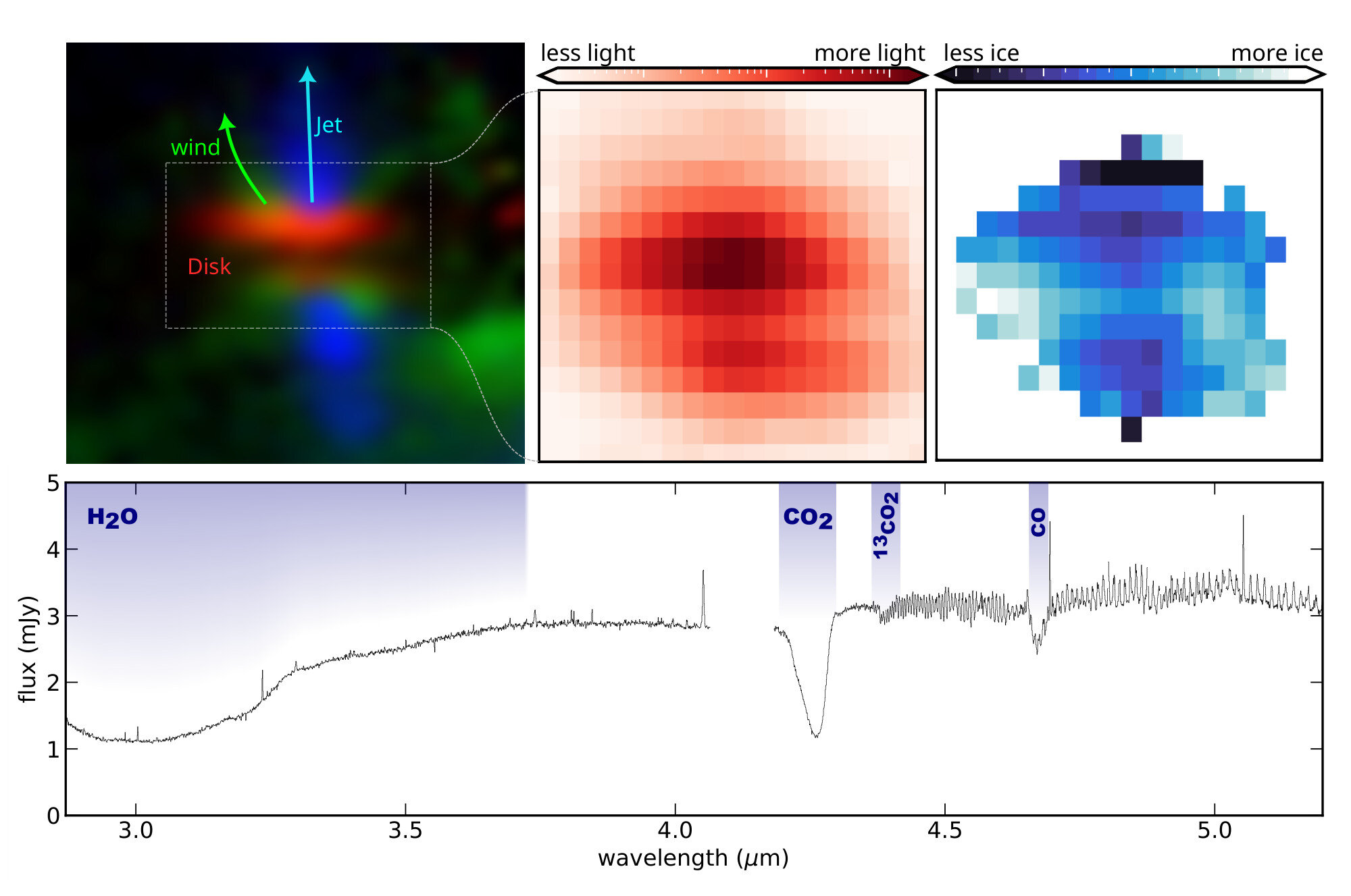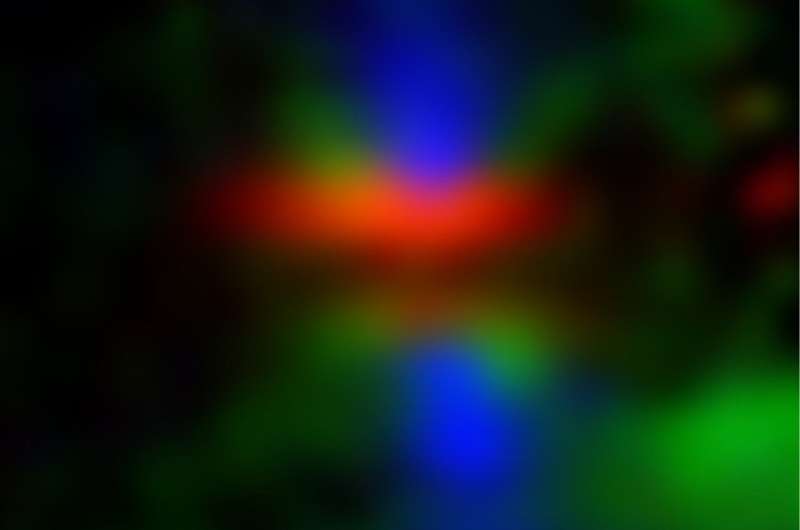

A Dutch-led international team of astronomers has made the first two-dimensional inventory of ice in a planet-forming disk of dust and gas surrounding a young star. They used the James Webb Space Telescope and have published their findings in the journal Astronomy & Astrophysics.
Ice is important to the formation of planets and comets. Thanks to ice, solid dust particles clump together into larger chunks, out of which planets and comets form. Furthermore, the impacts of ice-bearing comets probably contributed significantly to the amount of water on our Earth, forming its seas.
This ice also contains atoms of carbon, hydrogen, oxygen, and nitrogen that are important in the formation of the molecular building blocks of life. However, ice in planet-forming disks had never been mapped in detail before. That’s because Earth-based telescopes are hampered by our water-bearing atmosphere and because other space telescopes were not large enough to detect and resolve such faint targets. The James Webb Space Telescope solves these problems.
A ‘hamburger’ disk
The researchers studied the starlight from the young star HH 48 NE as it passes through its planet-forming disk towards the space telescope. The star and disk are located about 600 light years from Earth in the southern constellation Chameleon. The disk appears like a hamburger, with a dark central lane and two bright buns because we are looking at it from the side, edge-on.
On its way to the telescope, the starlight collides with many molecules of the disk. This creates absorption spectra with peaks specific to each molecule. The downside is that little light reaches the telescope, particularly from the densest part of the disk in the dark lane. But because the James Webb Space Telescope is more sensitive than any other telescope, the low levels of light do not pose a problem.
The researchers observed distinct peaks of water ice (H2O), carbon dioxide ice (CO2), and carbon monoxide ice (CO) in the absorption spectra. Furthermore, they found evidence of ice of ammonia (NH3), cyanate (OCN–), carbonyl sulfide (OCS), and heavy carbon dioxide (13CO2).
The ratio of regular carbon dioxide to heavy carbon dioxide allowed the researchers to calculate for the first time how much carbon dioxide is present in the disk. One of the interesting outcomes was that the CO ice the researchers detected may be mixed with the less volatile CO2 and water ice, allowing it to stay frozen closer to the star than previously thought.

The Ice Age program
“The direct mapping of ice in a planet-forming disk provides important input for modeling studies that help to better understand the formation of our Earth, other planets in our solar system and around other stars. With those observations, we can now begin to make firmer statements about the physics and chemistry of star and planet formation,” says the lead author of the study Ardjan Sturm (Leiden University, the Netherlands).
“In 2016, we created one of the first JWST research programs, Ice Age. We wished to study how the icy building blocks of life evolve on the journey from their origins in cold interstellar clouds to the comet-forming regions of young planetary systems. Now the results are starting to arrive. It’s a really exciting time,” says co-author Melissa McClure (Leiden University). She leads the research program and published the first Ice Age ice observations in molecular clouds in January 2023.
The Ice Age team will study more extensive spectra of the same planet-forming disk in the near future. In addition, they are now able to observe other planet-forming disks. If the finding about CO ice mixtures holds, this would modify the current understanding of planetary compositions, potentially leading to more carbon-rich planets closer in to the star.
Ultimately, the researchers intend to learn more about the formation pathways and resulting composition of planets, asteroids, and comets.
More information:
J.A. Sturm et al, A JWST inventory of protoplanetary disk ices: The edge-on protoplanetary disk HH 48 NE, seen with the Ice Age ERS program, Astronomy & Astrophysics (2023). DOI: 10.1051/0004-6361/202347512. www.aanda.org/10.1051/0004-6361/202347512
Provided by
Netherlands Research School for Astronomy
Citation:
Astronomers provide first detailed picture of ice in planet-forming disk (2023, December 6)
retrieved 6 December 2023
from https://phys.org/news/2023-12-astronomers-picture-ice-planet-forming-disk.html
This document is subject to copyright. Apart from any fair dealing for the purpose of private study or research, no
part may be reproduced without the written permission. The content is provided for information purposes only.





